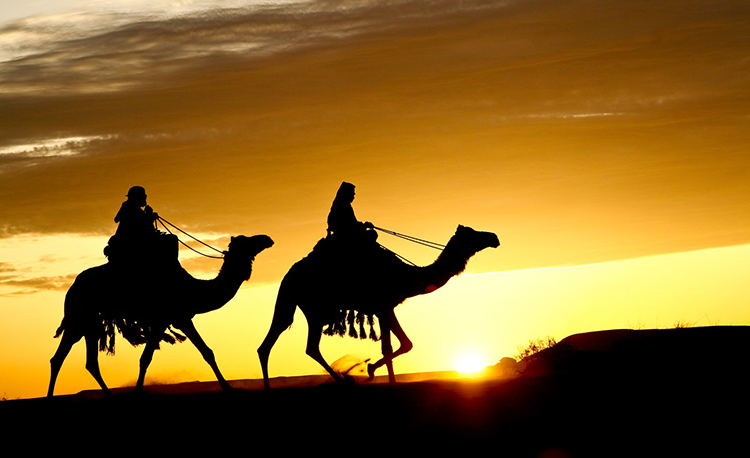Since 2016 is a leap year, meaning we’ll have an extra day in February, we thought we’d have a look into the history of our calendars and some interesting facts regarding them.

The Islamic calendar is a lunar calendar consisting of 12 months in a year of 354 days. The Hijri calendar began in 622 during the Hijra (emigration) of Prophet Muhammad (S) from Makkah to Madinah.
The Islamic months are as follows:
-
Muharram
-
Safar
-
Rabi al-Awwal
-
Rabi al-Thani
-
Jumadi al-Awwal
-
Jumadi al-Thani
-
Rajab
-
Sha’ban
-
Ramadan
-
Shawwal
-
Dhul Oi’dah
-
Dhul Hijjah.
The current Islamic year is 1437 AH. In the Gregorian calendar, 1437 AH and is running from approximately 14 October 2015 to 2 October 2016.

Facts about the Hijri Calendar:
-
The lunar calendar lags behind the solar calendar by around ten days every year.
-
The months of the Islamic calendar fall in different parts of the Gregorian calendar each year, which repeats every 33 years.
-
The Muslim calendar began specifically on July 16.
-
The letters A.H stand for Anno Hegirae and is the equivalent of A.D. in the Gregorian calendar.
-
The year 2000 was 1420 on the Muslim calendar.
-
The crescent was the religious and military symbol of the Ottoman Turks in the 13th
-
To keep the months in sync with the phases of the moon, the length of the twelfth month varies: during a thirty year cycle, 19 of the final months have 29 days and 11 of them have 30 days.
-
In the 30-year cycle, the 2nd, 5th, 7th, 19th, 13th, 16th, 18th, 21st, 24th, 26th and 29th years are leap years.
-
Umar ibn Al Khattab invented the Islamic calendar. He standardized the many calendars of the Arabian Peninsula in the year 638 A.D.
-
There is a 578-year difference between the Gregorian and Islamic calendars. However, in the year 20,874 AD, it will also be 20,874 AH.
-
On leap years, one day is added to the 12th month, giving it 30 days.
-
The earliest surviving use of the Islamic calendar is on a papyrus from Egypt, which was written in 22 AH.

Also called the Western or Christian calendar, the Gregorian calendar is the most widely used calendar around the world. It is named for Pope Gregory XIII, who introduced it in 1582 and is a solar calendar.
Leap year occurs every four years adding a quarter day each year (365.25, 365.5, 365.75), ultimately making it a full 366 days. This means we will have 29 days in February this year, instead of 28.
We all know that this calendar also consists of 12 months, but here some interesting facts about the Gregorian calendar:
-
Before the Gregorian, there was the Julian calendar. It was replaced because it did not properly reflect the actual time it takes the Earth to circle once around the sun.
-
To get the calendar back in tune with the correct astronomy, a number of days were dropped in the new calendar, creating irregular months with only 18 days and odd dates like February 30.
-
Many countries used the Julian calendar even after the introduction of the Gregorian. Turkey was the last country to officially switch to the new system on January 1, 1927.
-
The original goal of the Gregorian calendar was to change the date of Easter so it is closer to spring.
-
The Gregorian calendar still differs from the solar year by 26 seconds per year. By the year 4909, the Gregorian calendar will be a full day ahead of the solar year.
-
Britain’s adoption of the Gregorian calendar apparently sparked riots and protest. Rioters supposedly took to the streets, demanding that the government “give us our 11 days.”
-
Before the Gregorian calendar’s implementation, the English New Year began on March 25, also known as Lady Day.










